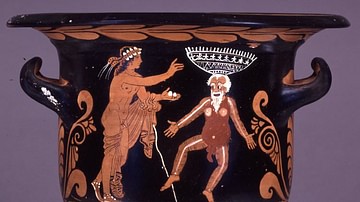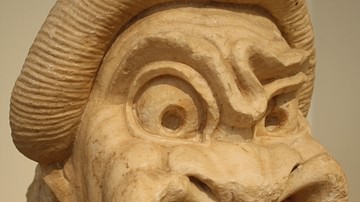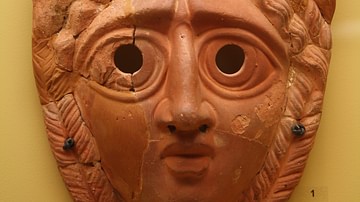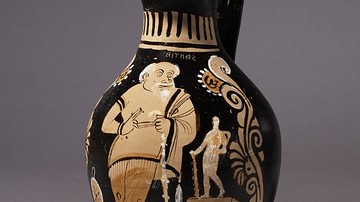Server Costs Fundraiser 2024
Help our mission to provide free history education to the world! Please donate and contribute to covering our server costs in 2024. With your support, millions of people learn about history entirely for free every month.
$3926 / $18000
Video
The origin of Ancient Greek comedy has been lost to time, however, we know from pottery depicting men as actors dressing up in wild costumes that it was a firmly established genre by the 6th century BCE. Ancient Greek comedy can be split into three distinct categories, Old Comedy, Middle Comedy (which has been mostly lost to us), and New Comedy, and would poke fun at contemporary issues, politicians, philosophers, and fellow poets and artists.
Old comedy refers to comedy written in the 5th century BCE, and the earliest comedy that has survived to us today is Aristophanes’ Acharnians which was originally performed in 425 BCE. Old Comedy was deeply engaged in the political situation of the time they were composed, but it incorporated fantastical elements like giant creatures and actors jumping across huge geographical distances. In the late fourth century and into the early third century BCE, a new style of comedy arrived, which has been called New Comedy. Some scholars suggest an intermediary category called Middle Comedy, which was less about political themes and more concerned with mythological parodies but no full texts survive from this time. We know a bit more about the writers of New Comedy, including Philemon who wrote 97 plays, Diphilus who wrote around 100 plays and Philippides. However, Menander, who wrote around 100 plays, is considered to be the greatest poet of New Comedy, even though Philemon actually won more festivals than Menander!
— ATTRIBUTIONS —
You can find all attribution and credits for images, animations, graphics and music here - https://worldhistory.typehut.com/ancient-greek-comedy-history-structure-aristophanes-and-menander-images-and-attributions-4613
The music used in this recording is the intellectual copyright of Michael Levy, a prolific composer for the recreated lyres of antiquity, and used with the creator's permission. Michael Levy's music is available to stream at all the major digital music platforms. Find out more on:
https://www.ancientlyre.com
https://open.spotify.com/artist/7Dx2vFEg8DmOJ5YCRm4A5v?si=emacIH9CRieFNGXRUyJ9
https://www.youtube.com/channel/UCJ1X6F7lGMEadnNETSzTv8A
— THUMBNAIL IMAGE —
https://commons.wikimedia.org/wiki/File:Wall_painting_-_actors_from_the_New_Comedy_-_Stabiae_-_Napoli_MAN_9034.jpg
ArchaiOptix
CC BY-SA 4.0
Subscribe to this author
About the Author
![Kelly Macquire]()
Kelly is a graduate from Monash University who has completed her BA (Honours) in Ancient History and Archaeology, focussing on iconography and status in Pylos burials. She has a passion for mythology and the Aegean Bronze Age.
License & Copyright
Original video by Kelly Macquire. Embedded by Kelly Macquire, published on 07 May 2021. Please check the original source(s) for copyright information. Please note that content linked from this page may have different licensing terms.
The video and its description text are provided by Youtube. This website claims no authorship of this content; we are republishing it for educational purposes.







